
This post is best experienced in dark mode.
It’s hard to believe, but it’s been 14 years since Apple shipped the first iPhones. On this day in 2007, Apple Stores across the United States hosted the “iPhone World Premiere,” and life was never the same. Looking back on that day, it’s clear that it marked a turning point. It was the beginning of a revolution in basically every single industry.
It fundamentally changed the way almost every task is accomplished. It spawned entirely new industries and ideas. We take our iPhones for granted today, but life before the iPhone was very different. Let’s take a look back at the day the world changed in the blink of an eye.
At 2 p.m. on June 29, 2007 Apple Stores closed to prepare for the premiere. Just a few hours later at 6 p.m. Apple Stores opened their doors to long lines of anxious Apple fans who had been waiting six months to get their hands on the borderline mythical device. It was a very special day and people knew it. Whether you waited in line in a mall or in the queue at a big city store like Apple Fifth Avenue in New York, the energy was the same.

Longtime Apple retail enthusiast Gary Allen, who sadly passed away in 2015, left behind one of the most incredible resources for Apple fans. His Flickr page is chock full of incredible albums from store openings, product launches, and more. One of Gary’s best albums is from the iPhone World Premiere at the Apple Store in Palo Alto.

His photos capture the very first time Apple fans lined up in droves to get their hands on an iPhone. In every year that followed, fans would continue to line up to get their hands on the next generation of iPhone. The excitement wouldn’t wane either, in fact I’d say it grew continuously over the years.
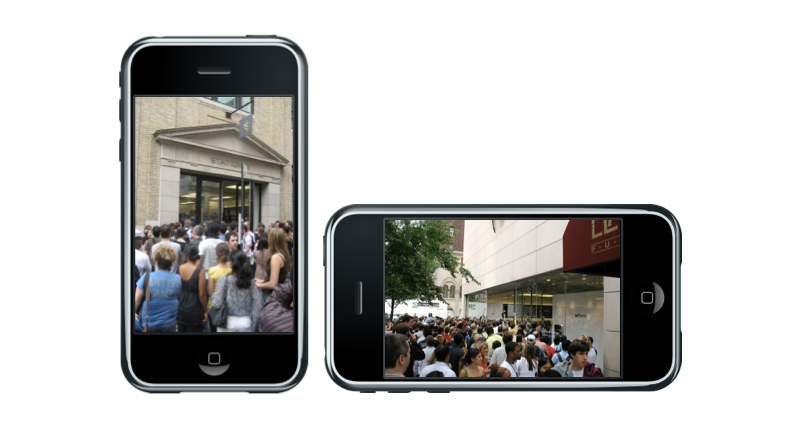
One of the coolest things Apple did for the launch of the original iPhone was to create giant phones that were displayed in store windows. These iPhones displays a gorgeous countdown that led up to the moment the doors opened, with large Myriad Pro numbers in a sleek silver gradient. All of Apple’s static in-store graphics somehow captured the magic of the device, particularly the magic of multi-touch.

Right before the doors opened, employees peeled away the curtains hiding their preparations. In the photo below you can see store employees at Apple’s store in Seattle removing the curtains as a camera crew watches on. The iPhone launch was covered heavily by the traditional media and you can see camera crews in just about every single shot from that day, regardless of the city.
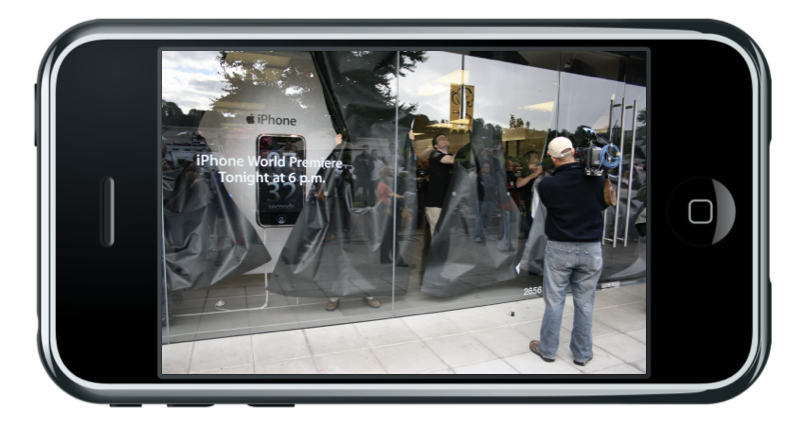
Apple co-founder Steve Wozniak was first in line at his local Apple Store at the Valley Fair Mall in San Jose. This awesome photo taken by Anuj Biyani captured the moment the doors opened and Woz entered the store. You can see him wearing a shirt that says “The line starts here.” Lots of people that day wore shirts that celebrated the launch, while many others wore shirts advertising their business knowing the press was covering the event.
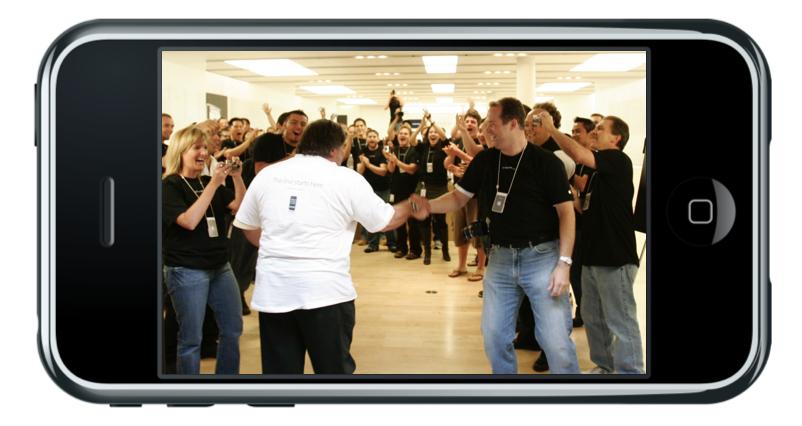
Fans who lined up at Apple Palo Alto didn’t know it, but they were in for a special surprise. Apple Palo Alto happened to be Steve Jobs’s local store and it wasn’t uncommon to see him in downtown Palo Alto. On launch day he stopped by the store with his wife Laurene to visit with friends and fans. In the photo below, you can see him chatting with longtime friends and original Macintosh team members Andy Hertzfeld and Bill Atkinson.
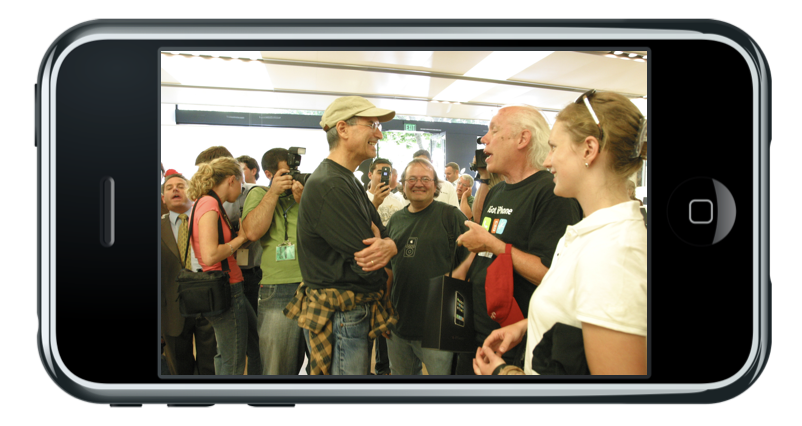
I can’t forget to give some credit to the online store. You know how Apple takes down the store before releasing a new product? They did just that on June 29, 2007 with a special page designed just for the iPhone launch. Luckily, François Proulx on Flickr saved and posted a screenshot of the page.
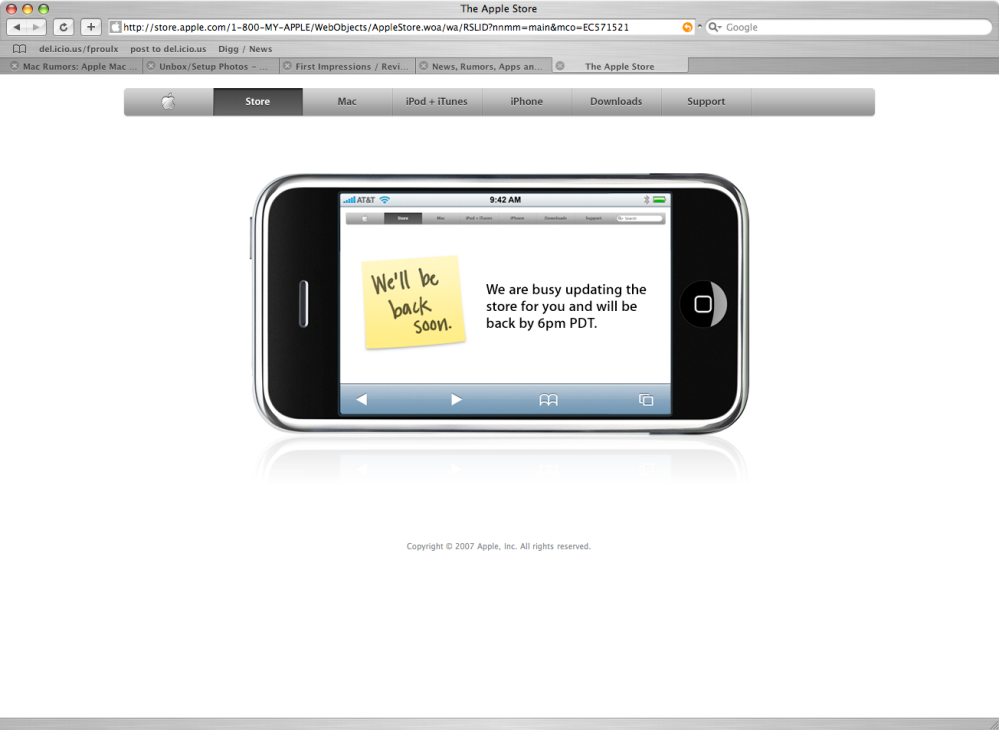
The iPhone World Premiere set the bar for future product launches. It showed just how excited the world was and just how important many of us expected it to be. It turned consumer product launches into a phenomenon. You weren’t just waiting to buy a product, you were waiting to buy the future. One Flickr album from the original launch I came across is full of photos of the phones customers had while waiting in line. It really highlights just how big of a deal that day was.

For the launch of the original iPhone, Apple employees were given two shirts. The first was to be worn ahead of the launch. It had a single Calendar icon marking the Friday, June 29, launch date with a simple “The wait is almost over” tagline. Once the iPhone was launched, shirts displayed the simple, “Say hello to iPhone.”

Of course these two shirts are fairly rare these days and occasionally appear for sale on the web. I’d argue that the pre-launch shirt is one of, if not, the most important piece of Apple Store memorabilia.
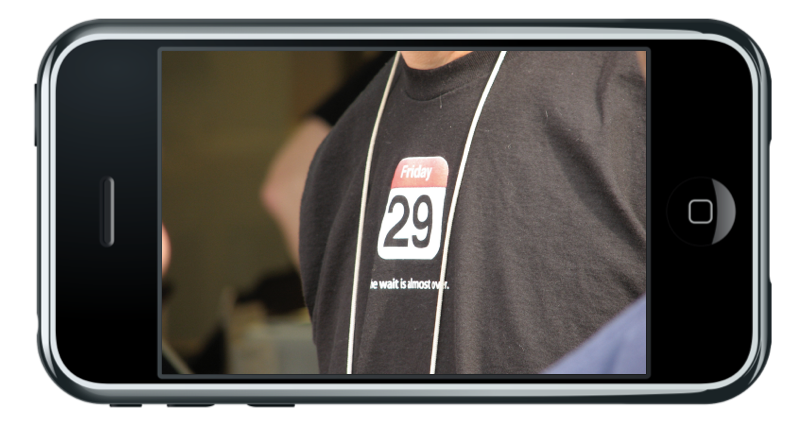
Customers who purchased an original iPhone were given a special limited-edition shopping bag. It was a higher-quality board bag with fabric handles, rather than the plastic sling bags regularly used at the time. It had a beautiful depiction of a glowing iPhone on the side with shiny text below it. The bag itself is now a collector’s item. It was designed to match the box of the original iPhone.
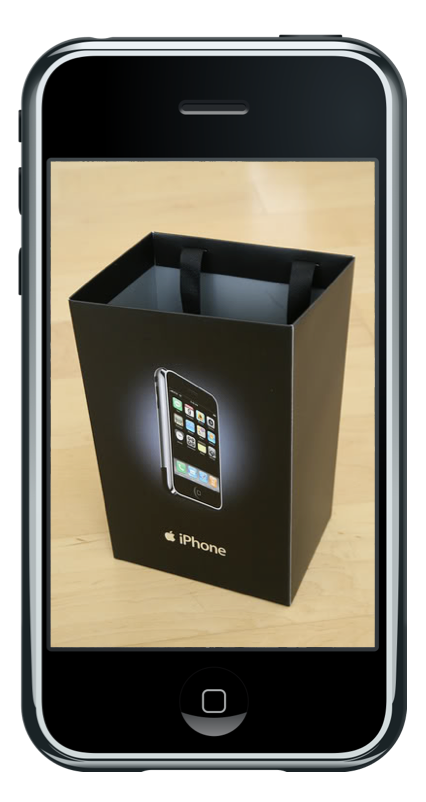
The box for the original iPhone was famously designed by Apple’s now head of human interface, Alan Dye. Dye told students at Syracuse University that every single black iPhone box had to have its corners painted so as not to have any color inconsistency. They “wanted a box that was completely black.” It was the kind of attention to detail we expected from Apple.
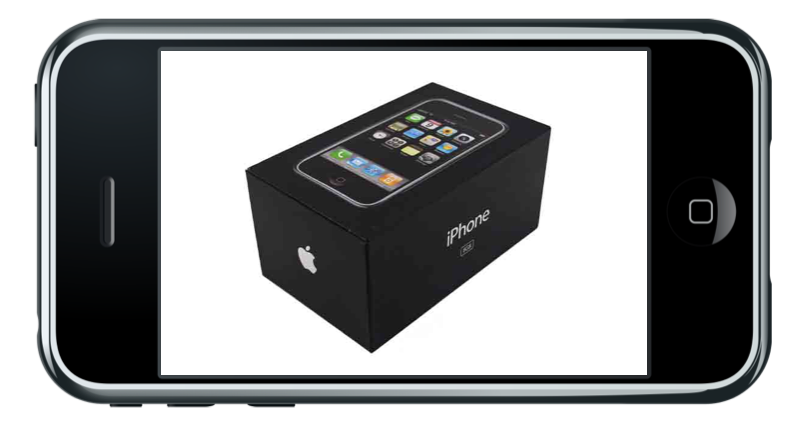
Inside the box was a whole host of accessories. Apple included a special white plastic dock that was designed specifically for the original iPhone in addition to the large power brick, earbuds, and 30 pin connector cable. Another goodie included in the box was a black microfiber cloth with “iPhone” embossed on it. The original box also included a crystal-clear tray that held the iPhone. Later, iPhones would use thinner black or white trays.
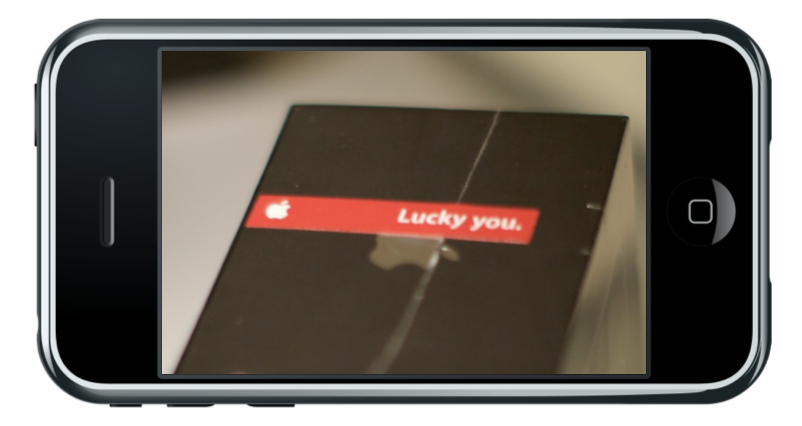
Some iPhone boxes even got a special “Lucky you.” sticker placed on them at the time of purchase. It was a very nice little touch and something Apple stores did in the mid to late 2000s.

While the iPhone included several common accessories in the box, Apple sold a few optional ones as well. The most interesting one was without a doubt the iPhone Bluetooth Headset. It was a single black earbud with a button and charging pins on the bottom. The shape of the earbud itself resembled the standard iPod headphones but attached to a wireless bluetooth stem.
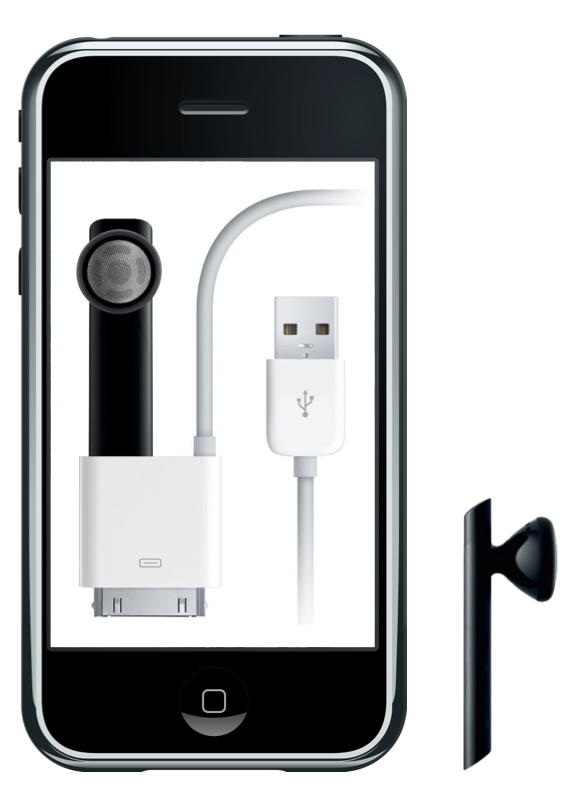
The iPhone’s Bluetooth Headset was very similar to modern day AirPods. It had a unique black design that set it apart from Apple’s standard iPod headphones. It included a unique 30-pin connector cable in the box that let you simultaneously charge your iPhone and your Bluetooth Headset. The box itself was actually a miniaturized version of the iPhone’s box. It had the same top sliding black box that revealed the earpiece in a clear tray. The headset itself was priced at $129, not too far off from what AirPods usually cost when they are on sale today.
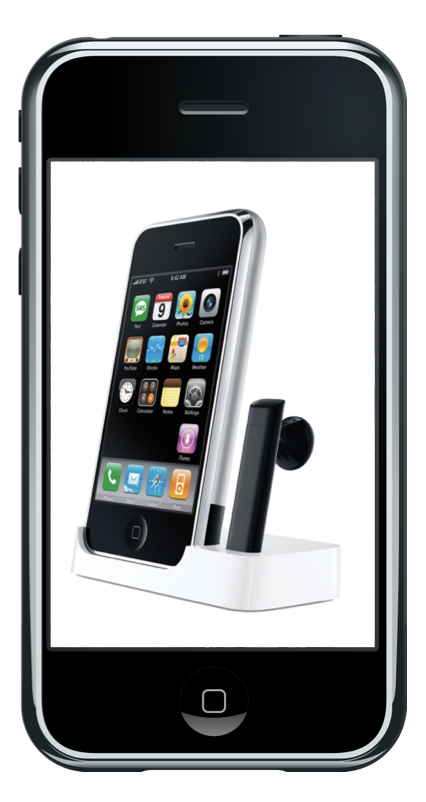
Apple also sold a special version of the dock that was included in the iPhone’s box, but with a charger for the Bluetooth Headset. It cost $49 on top of the $129 for the headset. Another accessory Apple sold for the original iPhone was a TTY adapter that connected via the headphone jack. The adapter allowed you to connect your iPhone to TTY accessories for users who are deaf or heard of hearing.

Apple continued to sell the adapter for many years, and while it’s no longer for sale, the listing is still on Apple.com. The TTY adapter was compatible with all iPhones that had a headphone jack, meaning all iPhones from the original to the iPhone 6s, 6s Plus, and SE worked with it.
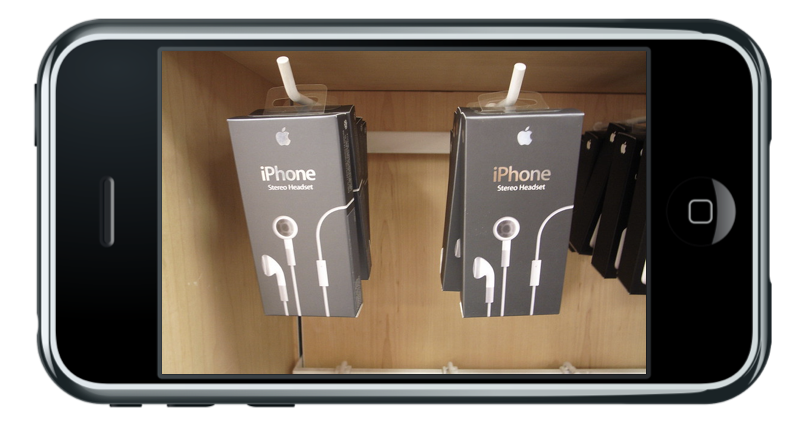
Another accessory that Apple originally created just for the iPhone was their earbuds with a built-in remote and microphone. They were officially called the “iPhone Stereo Headset” but later became standard with Apple devices when they gained volume up and down buttons.

Nowadays it’s totally normal for companies to seed tons of review units of upcoming devices to publications big and small. But for the launch of the original iPhone, Apple only passed out a handful of units to some very lucky writers. Apple seeded a unit to the legendary Walt Mossberg in addition to Katherine Boehert, David Pogue, Ed Baig, Steven Levy, and Phil Baker.

Photo: AllThingsD
Walt Mossberg reviewed the iPhone with fellow Wall Street Journal writer Katherine Boehret. They both believed the iPhone to be a hit and said that it would set a new bar for the cell phone market. They said in their written review:
We have been testing the iPhone for two weeks, in multiple usage scenarios, in cities across the country. Our verdict is that, despite some flaws and feature omissions, the iPhone is, on balance, a beautiful and breakthrough handheld computer. Its software, especially, sets a new bar for the smart-phone industry, and its clever finger-touch interface, which dispenses with a stylus and most buttons, works well, though it sometimes adds steps to common functions.

David Pogue at the New York Times titled his review, “The iPhone Matches Most of Its Hype.” Pogue said in his review, “As it turns out, much of the hype and some of the criticisms are justified. The iPhone is revolutionary…” Ed Baig at USA Today detailed a wide variety of aspects of the original iPhone that set it apart from the rest of the smartphone industry. Steven Levy wrote for Newsweek before the iPhone was even released, “In a sense, the iPhone has already made its mark.”
In the days that followed the original iPhone’s release, many other reviewers and publications you know today got their hands on the device. Jason Snell wrote for MacWorld in early July 2007:
The iPhone is the real deal. It’s a product that has already changed the way people look at the devices they carry in their pockets and purses. After only a few days with mine, the prospect of carrying a cellphone with me wherever I go no longer fills me with begrudging acceptance, but actual excitement.

In addition to the many written reviews, tons of videos were posted, and they’re actually really fun to look back on. You can watch reviews from several sources, as well as Walt Mossberg’s, below:
One video that’s particularly special isn’t a review, but a tribute to Steve Jobs. Filmmaker Casey Neistat made a movie about waiting to buy the original iPhone back in 2007 but didn’t publish it until Steve had passed away in October of 2011. Neistat waited overnight in front of the AT&T store in Union Square to get his first iPhone and documented the experience.
Several other videos documented the special day, some even including brief appearances by Steve himself. You can still find many on YouTube, from news reports to fan documentaries. While many of these videos are low quality by today’s standards, they live on as time capsules that captured the spirit of the moment.

One thing every single iPhone buyer had to do on launch day was activate their device at home. After returning from the Apple or AT&T store, users had to download the latest version of iTunes and connect their device to their computer. iTunes would then allow you to activate your iPhone on AT&T’s network.

The weirdest part of the process was choosing data and text plans right in iTunes. After your iPhone activated, which could take a considerably long amount of time due to the amount of people trying to activate their devices at the same time, you could sync your personal content.
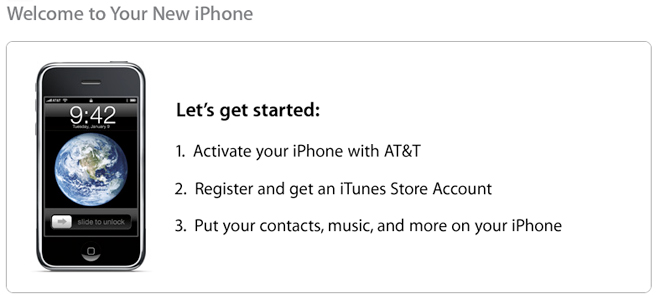
Apple lauded the new activation process a few days before the iPhone World Premiere in a press release. It focused on how activation would be similar to setting up an iPod, making it instantly familiar to millions of people. Activation required iTunes 7.3 on a Mac with Mac OS X Tiger or a PC with Windows XP or Vista.

In the first 30 hours of sales, Apple sold 270,000 iPhones. Within 74 days, Apple had sold 1 million iPhones. Steve Jobs said it took nearly two years for that many iPods to be sold. iPhone was an instant hit. The company launched the first iPod touch to give customers the iPhone experience without the phone part in September 2007. They also cut the price of the 8GB iPhone and stopped selling the smaller 4GB model. Apple gave iPhone buyers who spent up to $200 more on the device a $100 store credit.
Now, 14 years later, Apple has more than 1 billion iPhones out in the world in active use. I’d call that a helluva success.
Main graphic of the iPhone: Credit to Rafael Fernandez via Wikipedia
Author: Parker Ortolani
Source: 9TO5Google



